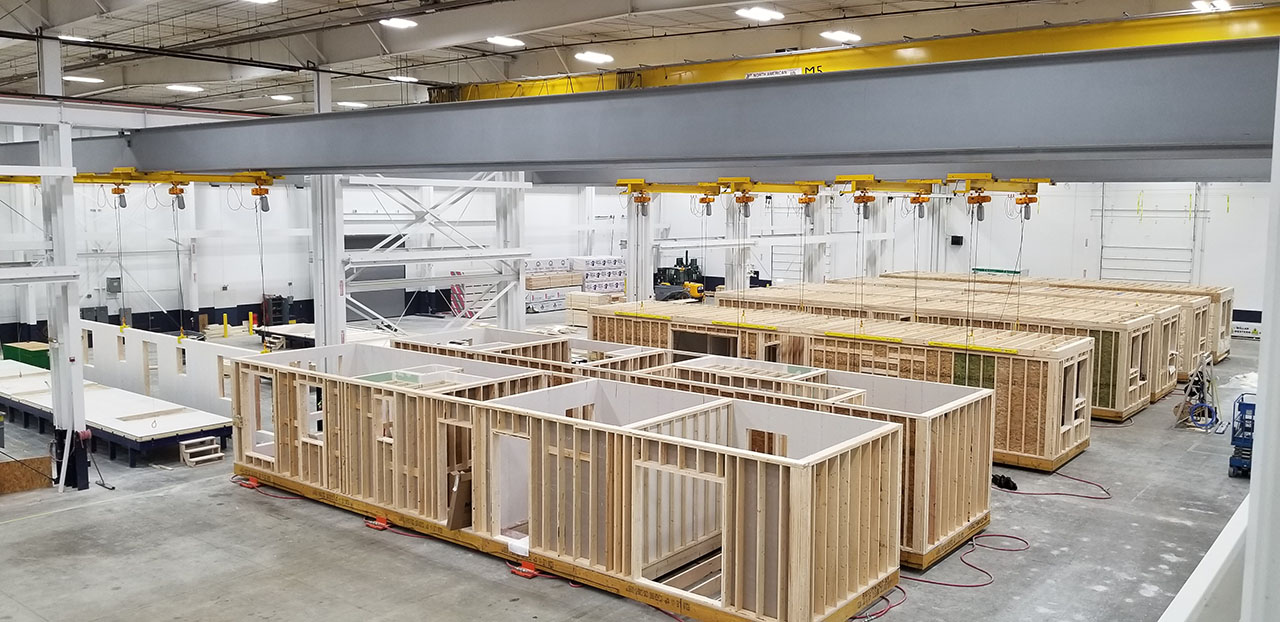
How COVID-19 Is a Catalyst for a Shift to Modular Construction
The year 2020 will go down in the history books mainly because of the global COVID-19 pandemic that spread all over the world and greatly affected life negatively. In addition to affecting human health and even causing deaths, many businesses and jobs have been lost amid lockdowns, travel bans, and other strict regulations to curb the spread of coronavirus.
Indeed, many factories, manufacturing plants, schools, and other institutions had to close their doors beginning in March when the disease struck with full force for the first time in most places. The following months made things worse, but governments started to develop policies and discover methods to reduce the transmission of coronavirus while opening the economy at the same time.
Some of the new regulations require institutions to have extra space to enable social distancing as things start to get back to normal. This move has really promoted the use of modular and temporary structures as the best and most affordable building options.
Temporary Health Facilities
Even before people could think of the best strategy to get back to more typical operations, the surge of patients in hospitals and the need to separate isolation centers led to a high demand for modular and temporary structures for these centers.
According to experts in the creation of temporary structures, demand for modular options increased because health centers required a quick solution to deal with the surging number of COVID-19 patients. They really needed structures that could be erected in a few days and be ready to accommodate patients.
Temporary Classrooms
Today, the biggest topic is the resumption of education programs after flattening the coronavirus curve. The experts at Smart-Space have been leaders in the provision of temporary learning structures in the UK. Many schools are now selecting modular temporary structures to meet the government guidelines. They are required to have more classrooms so that children can sit at least 1.5 meters apart.
In addition to classrooms, there is also the need to have more facilities such as one-way corridors, more washrooms, expanded offices, and additional dining areas. Modular structures can take care of all these in an excellent way.
Expansion of Factories and Organizations
Other requirements set by the governments in various countries require factories, businesses, and organizations to have enough room for social distancing by employees. While those with financial constraints have scaled down their workforces, others have preferred extending workspaces through the use of modular structures.
A benefit of using temporary structures is that they can be dismantled when the coronavirus pandemic is over and stored for later use. As such, the companies do not feel like the cost of expansion is too difficult. Additionally, they can use the modular structures in other places such as when they need more room because of growth or want to open new branches. Finally, these structures can also be rented out to other businesses or organizations when they have events, which turns out to be a source of revenue.
Final Word
As you can see, COVID-19 is playing an important role in the promotion of modular and other temporary structures. If you want your business or organization to benefit from one, it is time to look for the best provider, select a design, and place an order.
Can you be more specific about the content of your article? After reading it, I still have some doubts. Hope you can help me.
Your point of view caught my eye and was very interesting. Thanks. I have a question for you.
Your point of view caught my eye and was very interesting. Thanks. I have a question for you.
I just like the helpful information you provide in your articles
Very well presented. Every quote was awesome and thanks for sharing the content. Keep sharing and keep motivating others.
Pretty! This has been a really wonderful post. Many thanks for providing these details.
I truly appreciate your technique of writing a blog. I added it to my bookmark site list and will
Thanks for sharing. I read many of your blog posts, cool, your blog is very good. https://www.binance.com/pl/register?ref=YY80CKRN
Can you be more specific about the content of your article? After reading it, I still have some doubts. Hope you can help me. https://accounts.binance.info/en-IN/register?ref=UM6SMJM3
I don’t think the title of your article matches the content lol. Just kidding, mainly because I had some doubts after reading the article.
Thanks for sharing. I read many of your blog posts, cool, your blog is very good. https://www.binance.info/ro/register-person?ref=V3MG69RO
Thank you for your sharing. I am worried that I lack creative ideas. It is your article that makes me full of hope. Thank you. But, I have a question, can you help me? gate注册
Thank you for your sharing. I am worried that I lack creative ideas. It is your article that makes me full of hope. Thank you. But, I have a question, can you help me? skapa binance-konto